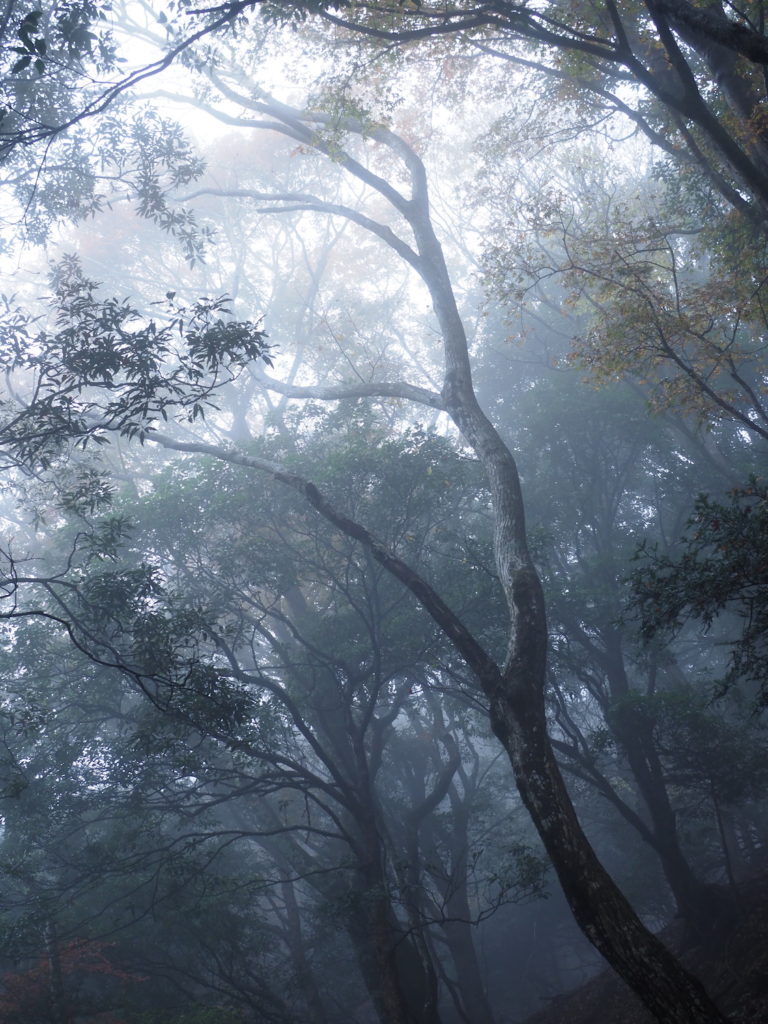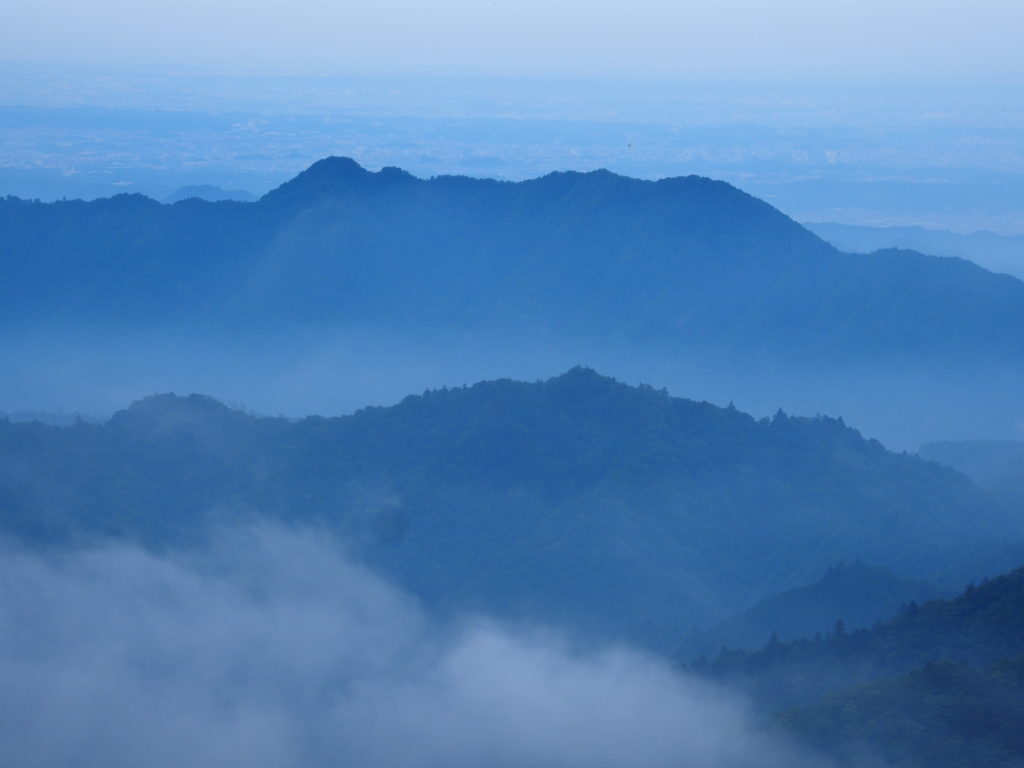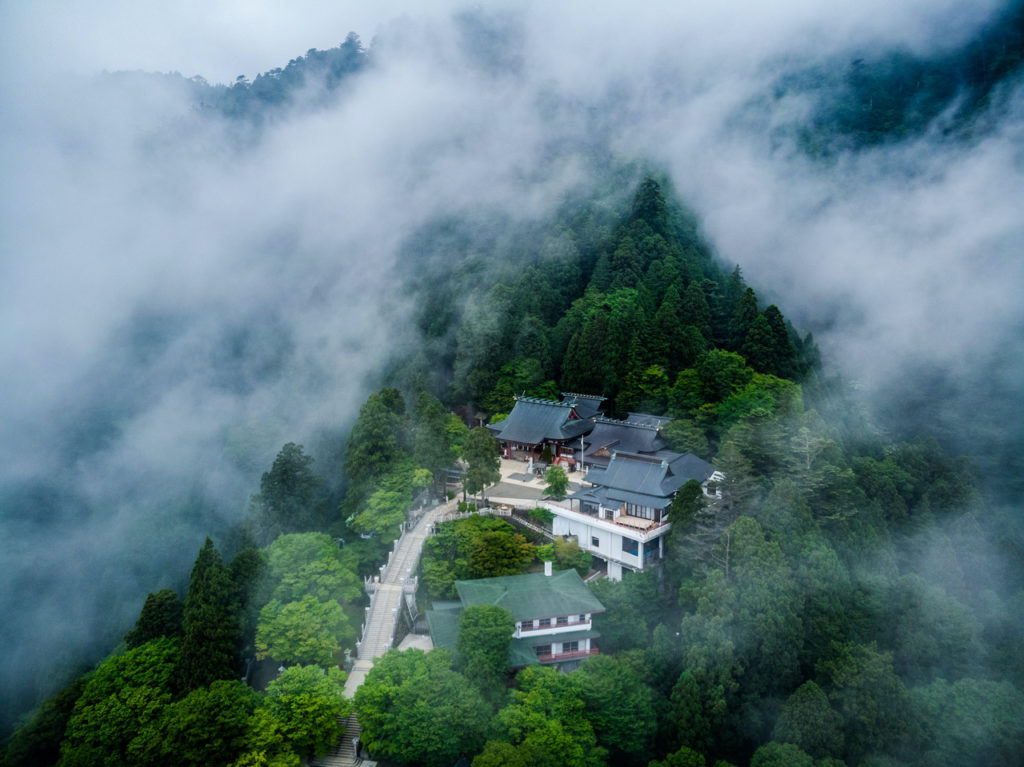
From time immemorial, Mt. Oyama has been revered as a sacred mountain and an object of worship. Records from the Edo period (1603–1868) say it was an immensely popular tourist destination that attracted more than 200,000 visitors each year. Temple and shrine visits were a special treat for commoners in premodern Japan. After traveling for two or three days to pay their respects at Mt. Oyama, quite a few Edoites ventured farther to Enoshima Island and completed an even more rewarding outing. At PAPERSKY, our hike starts from a slope called the Koma Sando Approach. From here, we head for the summit at 1,252 meters above sea level, picturing ourselves blending in with a great crowd of Edoites.
The Koma Sando Approach is a gentle, endless stairway serving as the gateway to Mt. Oyama. Both sides of the narrow path are lined with inviting signatures of Mt. Oyama like quaint temple lodgings, tofu restaurants, and souvenir shops making koma spinning tops.

Some 20 minutes into our leisurely hike up the approach, the entrance to the Oyama Cable Car comes into view, but we opt to continue up the mountain trail on foot. After debating whether to take the steep Otoko-zaka Trail (men’s slope) or the slightly gentler Onna-zaka Trail (women’s), we choose the latter. It turns out to be tough enough, and what’s more, the bypass route has only ups and no downs. Go on, keep climbing. The message from the mountain sinks in as we carry on with our ascent. Over an hour passes before we reach the lower shrine of Oyama Afuri Jinja.

We catch our breath and take a look around. There are several large groups, but they are outnumbered by small groups including pairs and solo hikers. Perhaps this is to be expected today, although things were different in the Edo period. Large groups were the norm thanks to religious associations called Ko, which were customarily formed by occupation or place of residence. At the peak, as many as 15,000 of these associations went by the name Oyama Ko. Mt. Oyama was celebrated as a place of worship by people throughout the Kanto region. Many believed it brought them rain and water for the crops, as suggested by the epithet Amefuri-yama, later shortened to Afuri-yama, meaning “rain mountain.” Others believed it granted their wish for thriving business. And yet others believed it was where their spirits came after death. For what ever reason, everyone seems to have climbed this trail believing that it would bring happiness. All of this runs through our minds as we make our way up the never-ending slope that is turning out to be pretty grueling.

Pressing ahead in the mountain without much of a view is something of a spiritual practice. It forces us to focus solely on walking, and we find that this refreshes our minds, our souls, and our bodies. Over an hour since we left the lower shrine of Oyama Afuri Jinja, the slope has grown so steep that we are properly “climbing a mountain.” Each time we look up with the hope of glimpsing the summit, all that lies ahead is the infinite slope. The sharper the incline, the more we look forward to the view from the top.

Mt. Oyama may have been a big crowd pleaser, but this doesn’t mean it was always calm and peaceful. In the early modern period, the area was known for conflicts between Buddhist monks and Yamabushi ascetic hermits. The skirmishes were nothing but a nuisance for the commoners, since the mountain was one of their rare sources of pleasure. The Tokugawa shogunate moved to resolve the situation by sending masters of the Kanze school of Noh to Mt. Oyama, training both the Buddhist monks and the Yamabushi hermits in the dance-drama, and requiring them to organize two presentation events each year. The brilliant policy succeeded: The adversaries competed not with arms but in the arts, and peace was restored as a result. The theatrical form lives on today as Oyama Noh. We keep walking while we marvel at this fragment of history, and at last, the trail begins to show hints of the summit.

An hour and half since we left the lower shrine of Oyama Afuri Jinja, the temperature drops and the breeze feels cool against our skin. We have arrived at the summit. Luckily, it’s a perfectly clear day and we can make out the Shinjuku skyscrapers, Mt. Fuji, and the Tanzawa Mountains. We wonder how many people have come here and whooped with joy. Ruminating on the 2,200 plus years that Mt. Oyama has been revered as a sacred mountain, we conclude the first leg of our day trip.

The spectacular panorama from Oyama Afuri Jinja is awarded two stars in the Michelin Green Guide Japan. And this experience is always within reach for Tokyoites. Sure, it’s fun to travel far, but it’s also fun to venture near and witness beauties like this.
NOBODY KNOWS Project, produces concerts and performances drawing on Japan’s many traditional arts. They made this short video about our climb up Mt. Oyama.











